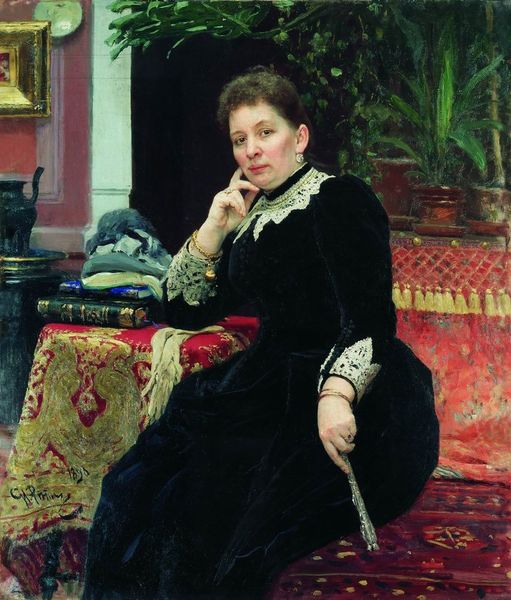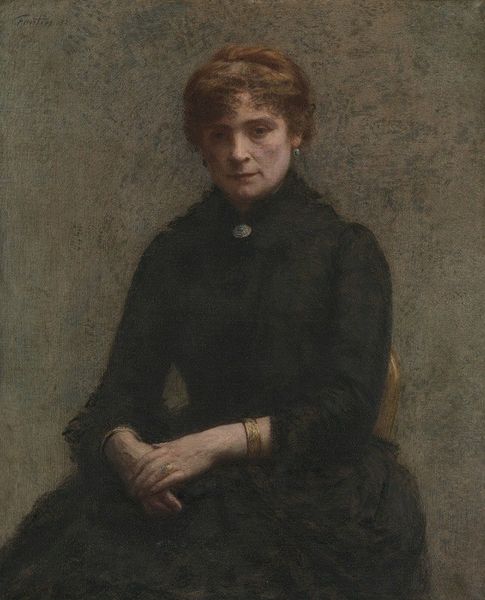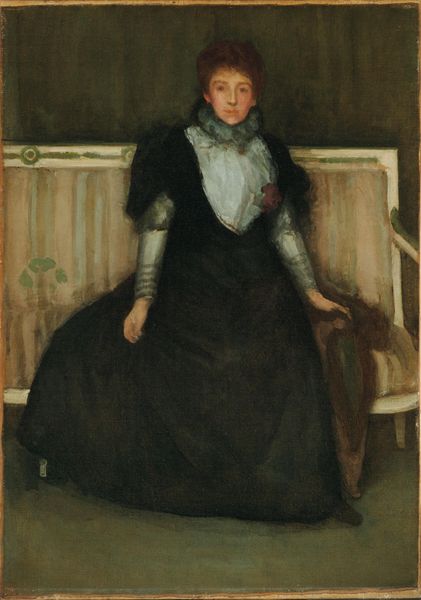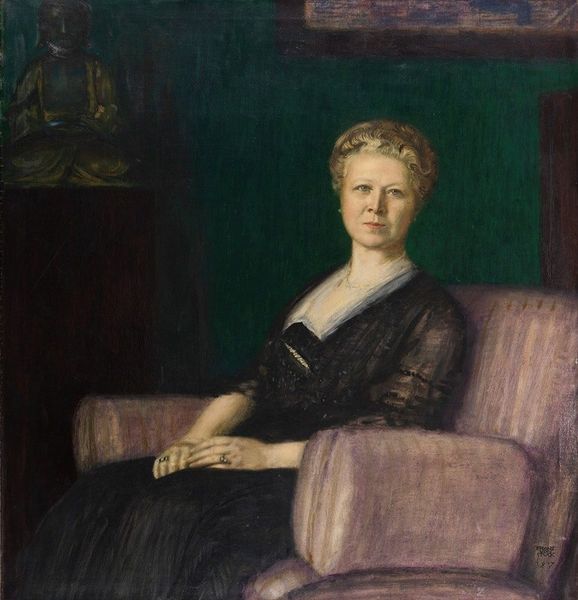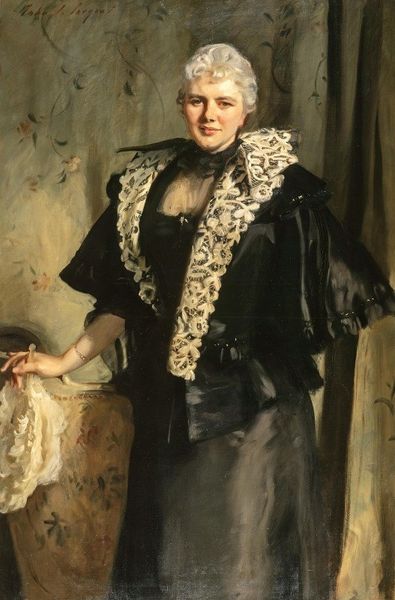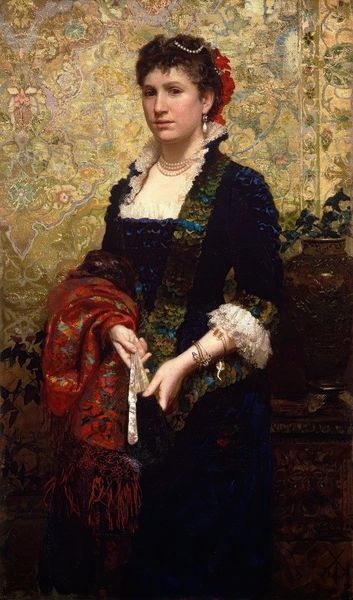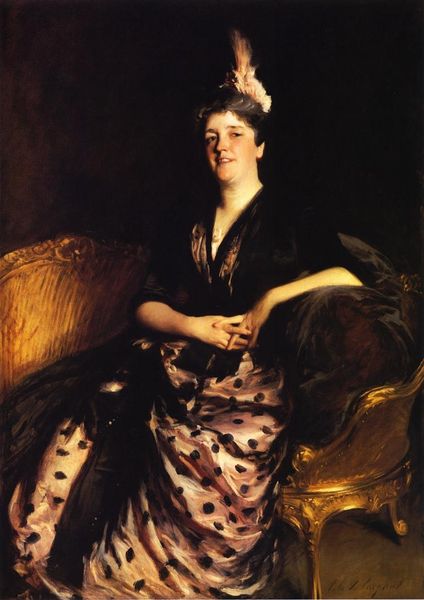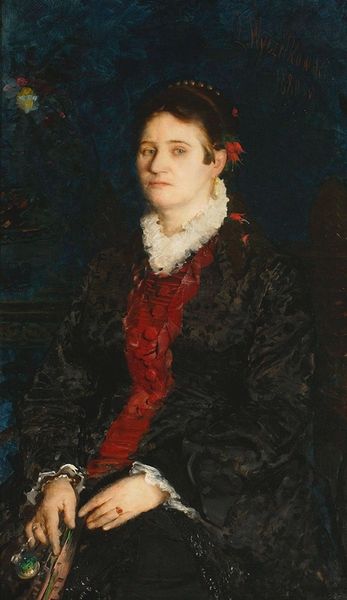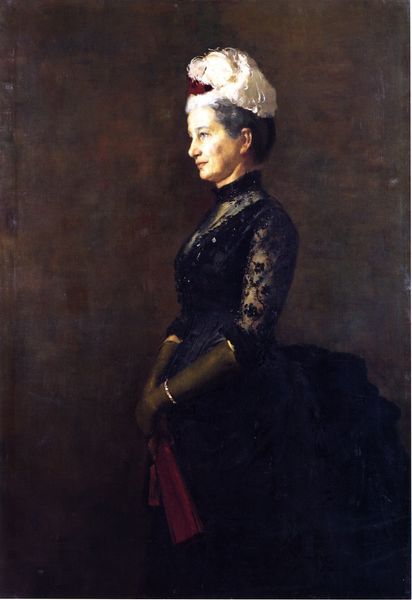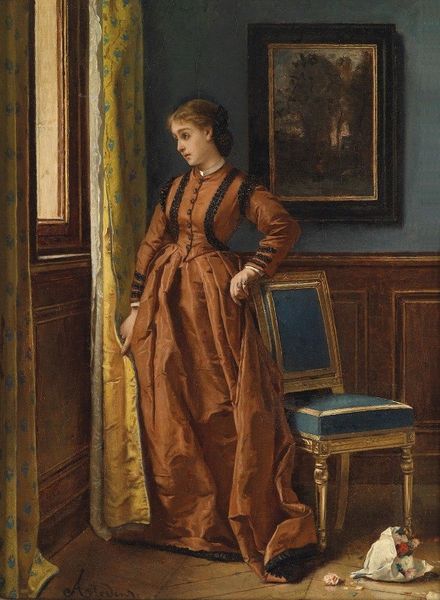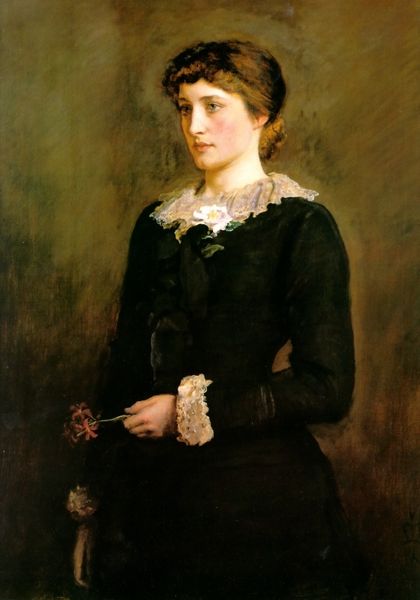
painting, oil-paint
#
portrait
#
painting
#
oil-paint
#
academic-art
#
realism
Copyright: Public domain
Curator: Let’s turn our attention now to Lawrence Alma-Tadema’s "Mrs. Ralph Sneyd," executed in 1889, now residing in a private collection. Editor: It’s deeply melancholic. The somber tones practically swallow the sitter, drawing her back into the shadows. Almost spectral, wouldn’t you say? Curator: Indeed. Alma-Tadema uses a restricted palette here; blacks and grays dominate. We see a manipulation of light and shadow, chiaroscuro, to create depth, and heighten the texture. The diagonal lines of the sitter’s dress direct the viewer’s eye. Editor: She seems so constricted, the dark gown blending into the darkness, the only light highlighting her hands. The flowers near the window... are they dying? This space feels charged with some untold story. Is it simply decorum, or something more turbulent just below the surface? Curator: Note the artist’s commitment to realism evident in the texture and the naturalistic depiction of the sitter's features. Her clothing, for instance, exhibits subtle variations that reveal the structure and hang of the material. One can almost feel the heaviness. This piece balances representation with narrative undertones. Editor: Yes, beneath that Victorian sobriety I imagine all the unspoken words. The rings, the bracelets, objects like armor for her sadness. But isn’t that always the challenge with a portrait like this— to penetrate past what is visible and intuit something that feels fundamentally human, and hidden? Curator: Perhaps. Though I lean more towards appreciating Alma-Tadema's controlled technical skill and considered compositional elements— elements which achieve a compelling visual tension between presence and absence, form and feeling. Editor: Well, the artist may have given us just enough shadow to illuminate the depths. Thanks for guiding us through this tenebrous but potent portrait.
Comments
No comments
Be the first to comment and join the conversation on the ultimate creative platform.
